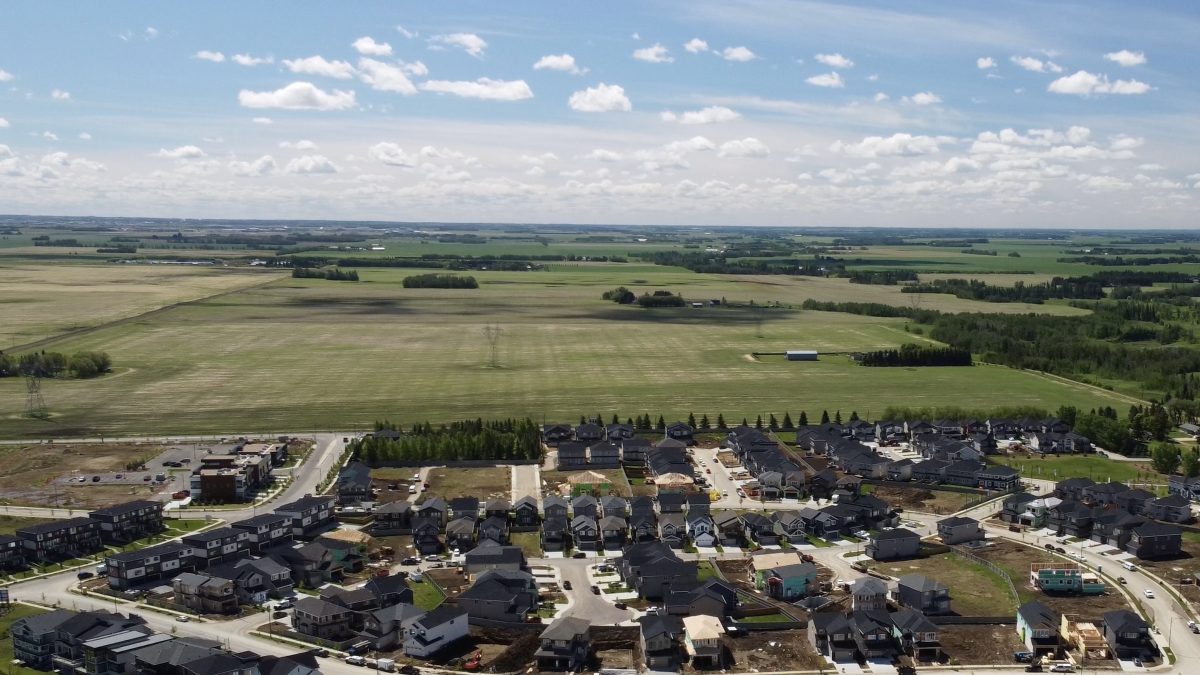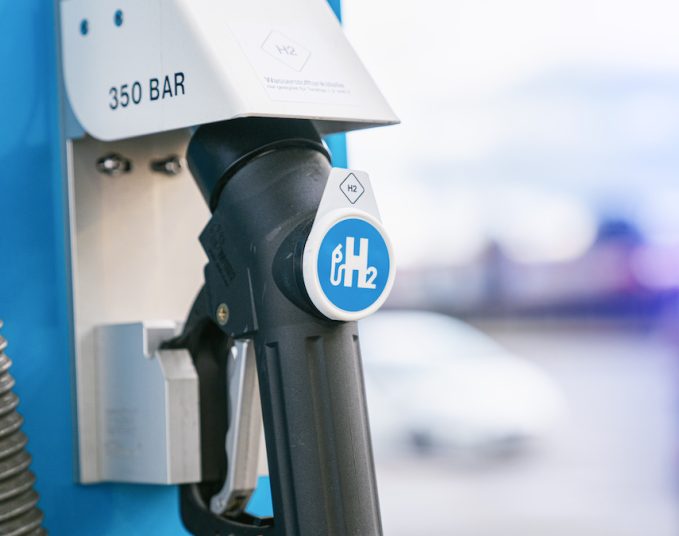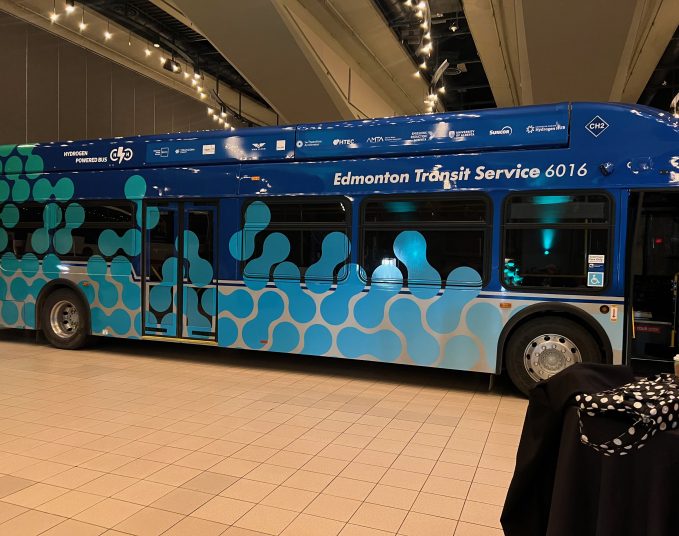After hours and hours and hours of debate, the City’s Urban Planning Committee decided not to decide on the thorny issue of putting the brakes on southern suburban expansion.
It will now go to City Council in a couple of weeks.
“I guess you could call it a draw,” said Kalen Anderson, the CEO of BILD Edmonton Metro, the new organization created out of the merger between Edmonton’s branch of the Urban Development Institute and the local arm of the Canadian Homebuilders’ Association. “It’s not a loss. The jury is still out.”
A former City planner, Anderson has been a vocal critic of administration and council’s steady move towards limiting south-side development, despite the fact Edmonton annexed land from Leduc County back in 2019 so that it could expand in that direction.
But this council, elected in 2021, is concerned over what it sees as sprawl and the costs associated with it — both economic and environmental. Several councillors — and Mayor Amarjeet Sohi — argue that the City has to bear the costs of parks, libraries, rec centres, transit and fire services to the new communities. They warn that some communities could be built without the promise of new schools.
But developers argue that the City can’t socially engineer where people want to live. The fact is, the majority of new developments are in the south, and that’s based on consumer choice, not market controls. And, their biggest worry is that if the City tries to restrict supply, the cost of housing will go up, and Edmonton will lose its place as the most affordable big city in the country.
Really, they’re both right. The problem is how ideologically driven the discussion has become. What should be a collaboration between builders and City Hall has become a politically charged exercise.
WHAT’S THE ISSUE?
The two words “substantial completion” can make your eyes gloss over. It’s political doublespeak for a very simple concept; that a brand-new community shouldn’t be planned until a neighbouring one that’s being currently developed is at least two-thirds finished. And by “finished,” that means parks, schools and City services are in place.
It sounds nice — but it takes years to plan a community and to build infrastructure like sewers. So, delaying planning can have a domino effect. And, in a city that added almost 100,000 people over the past couple of years — and is showing no signs of slowing down when it comes to growth — “substantial completion” could have a knock-on effect.
If we have to wait for the new southern subdivisions to hit the completion standards, the estimates are a new southern neighbourhood can’t be planned until 2029 at the earliest.
So, if passed, “substantial completion” puts further southern expansion at a standstill.
“Expanding into new land increases choice and housing supply,” said Adil Kodian, executive vice president of the Rohit Group of Companies. “Edmonton’s leadership in housing affordability is the result of extensive collaborative efforts over many years, integrating community and industry feedback to carefully avoid regulatory changes that would constrain housing supply.”
THE GREEN ARGUMENT
Several members of the City’s Energy Transition and Climate Resilience Committee spoke in favour of slowing down southern expansion.
“Sprawl is good for developers, but it’s not good for anyone else,” said Jacob Komar, who punctuated his presentation by saying that if developers get what they want, Edmontonians will be “trapped in a capitalist hellscape.”
He said promoting urban density and infill, and discouraging further development to the south “is one of the biggest climate actions we can take in the entire city.”
But Brad Armstrong, Qualico’s vice-president of Community Development, Northern Alberta, argued that slowing expansion won’t have a green impact.
“It will cause undersupply, especially in southwest.”
So, how can someone argue that slowing development won’t impact climate change? It’s because Edmonton doesn’t exist in a vacuum. So, if people looking to live in the south can’t go near Ellerslie Road or 41st Avenue SW, they’ll go to Leduc, Beaumont or Devon. And, even though they won’t pay taxes in Edmonton, they’ll still drive into the city and use our services.
“We will still have the cost of growth, we just won’t have the tax base to pay for it,” said Coun. Aaron Paquette, as he tried to sound out the arguments laid out by developers.
THE SQUEEZE
For a long time, there’s been a missing voice in this debate. And those are people who own property in the area that was annexed by Edmonton in 2019. Several of them appeared at City Hall this week — and they’re angry.
They’re caught in the middle. They own farms that no one wants to buy. With a possible hold on development, the land isn’t attractive for housing. Of course, with the annexation, no one sees farming in that area as a long-term life decision.
So they were pleading with the City to give them some sort of certainty.
“Please allow for development of annexed area south of 41st Avenue,” said Janet Hiller, a widow who wants to sell her agricultural land.
“It’s difficult to live under these conditions that have been forced on us for many years,” she said.
“I can’t see how it’s fair to leave us dormant for another 10 years.”
THE WHITE URBANIST PARADOX
Drive to the Ellerslie Road area and you will see that it’s a pretty multicultural place, more diverse than the established central neighbourhoods.
Harman Kandola, the vice president of Victory Homes and who also works with the City’s Anti-Racism Advisory Committee, said the fact many newcomers choose to live in the south needs to be recognized. Yes, he spoke publicly about what is a generally unspoken truth — that the drive to urbanize is based a lot on white perspectives. We are basing a lot of urbanism on white, Eurocentric ideals.
Kandola said that the City should recognize that the south side is a perfect example of how South Asian newcomers are drawn to an area where they feel at home. He said that Tagalog and Punjabi are commonly heard in the south.
“People decide where they want to live based on their cultural ties, access to amenities and proximity to important community hubs,” he said. “Restricting development in these areas not only infringes upon community autonomy, but it also limits residents’ ability to access essential services tailored to their cultural backgrounds — such as places of religious assembly, community supports and even grocery stores.”
WHAT ABOUT THE HOSPITAL?
The province has put plans for a south-side hospital on hold. And that’s a concern for developers, planners and city officials.
Coun. Jo-Anne Wright said the influx of south-side residents, who don’t have a local hospital, is already putting pressure on the Misericordia in the west end and Leduc’s health-care facilities in the south. She asked if “it is a disservice” to open more development, in the south, if there is no promise of a new hospital or new schools from the provincial government.
Kodian said that the power of demographics is strong. If more people move to the south, the political powers that be can’t ignore them. He said if the brakes are put on southern subdivisions, “the incentive for a hospital to be built doesn’t keep going.”
Savvy AF. Blunt AF. Edmonton AF.




